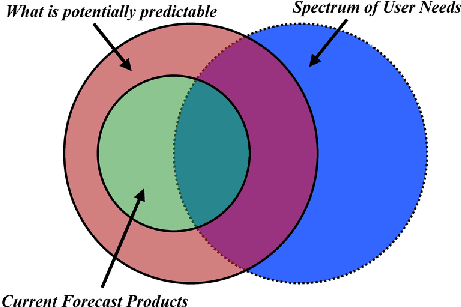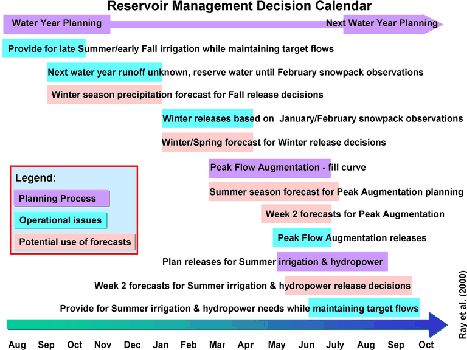6.3 User Studies and Societal Interactions
CDC has conducted studies to evaluate the usefulness of climate information and products. This research is part of a broader effort to provide improved climate information to support more informed decision-making, and is designed to complement CDC climate diagnostics and modeling research. Initial studies have provided insights into how climate information and products are and could be used, while simultaneously identifying areas for research on experimental climate products (Fig. 6.8).

6.3.1 Climate information and water management
CDC research has focused on the decision processes related to critical natural resource or society-relevant problems that are affected by climate. Goals are to learn what climate information is wanted and when, and how such information relates to specific decisions. In ongoing interactions with users, desired climate products are identified and the usefulness of prototype climate products is assessed.
One example of this strategy has been to focus on what is known about climate and integrate this information into our understanding of the annual cycle of reservoir management decisions (Fig. 6.9). In the Upper Colorado River Basin and Gunnison Basins, reservoirs that were originally built to provide reliable irrigation supply, hydropower, and recreation are now being operated to address additional concerns of maintaining appropriate flows for fish and water quality. Augmentation of spring peak flows and maintenance of late summer minimum in-stream flows in order to support the recovery of endangered fish are new issues in reservoir management. CDC has engaged reservoir managers seeking information to help address increasingly complex issues, and thus who are willing to consider new uses of climate information.

As illustrated in the decision calendar schematic (Fig. 6.9), NOAA long-lead precipitation and temperature forecasts can be incorporated into a fall forecast of winter snowpack accumulation with implications for subsequent April-June runoff. An improved understanding of ENSO influences on seasonal evolution of snowpack can lead to a more accurately planned "start of fill" target. By late spring, the NOAA long lead precipitation and temperature forecasts can be incorporated into summer season forecast irrigation demands. Throughout the spring one to two week precipitation and temperature forecasts can be used to provide improved estimates of volume and timing of spring releases needed to augment peak flows for habitat restoration and for flood mitigation. Throughout the summer, one to two week precipitation and temperature forecasts can be used to improve hydropower and irrigation scheduling, as well as low flow mitigation.
The decision calendar has proven useful in linking water resources management planning processes and operational issues with potential uses of variable lead-time forecasts and climate information. Future CDC climate applications research are anticipated to employ a similar approach, using the decision calendar framework to assess the role of climate information in decision-making related to energy, forest fires, air quality, and human health issues.